There are about 50 types of gulls (Seagull) worldwide. The Galapagos Lava Gull is the rarest, with only 300-600 left. These seabirds live in many places, from the coast to cities. They are smart, social, and important to nature.
This article will explore the amazing world of seagulls. We’ll look at their traits, behaviors, and their role in coastal ecosystems. These birds are everywhere, from beaches to cities, and have won the hearts of people everywhere.
The Ubiquitous Seabird: Unveiling the Secrets of Seagulls
Seagulls: Not Just Birds of the Sea
Seagulls are not just sea birds. They live in many places, not just by the sea. You can find them near lakes, rivers, and even in cities. They belong to the Laridae family, which has over 50 species worldwide.
The Global Diversity of Seagull Species
The Laridae family includes about 50 seagull species worldwide. They come in different sizes, colors, and behaviors. The smallest is the Little Gull, and the biggest is the Great Black-backed Gull.
As they grow, seagulls change a lot in looks. Young ones look very different from adults. This shows how adaptable and diverse seagulls are.
| Seagull Species | Wingspan | Length | Habitat Preference |
|---|---|---|---|
| Herring Gull | 51-60 inches | 22-26 inches | Coastal, urban, landfills |
| Ring-billed Gull | 41-49 inches | 16-21 inches | Coastal, inland lakes, landfills |
| Laughing Gull | 39-44 inches | 15-18 inches | Coastal, estuaries, marshes |
| Black-headed Gull | 35-41 inches | 12-15 inches | Coastal, inland lakes, rivers |
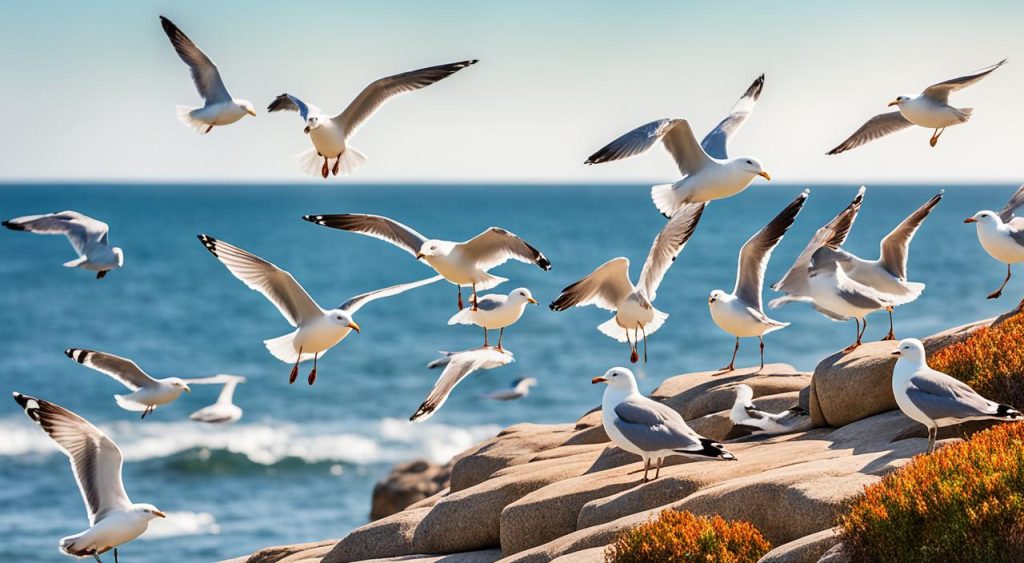
Learning about seagulls and their many homes helps us appreciate these coastal birds more.
Urban Adaptations: Seagulls in the City
Seagulls have shown they can live well in cities, far from their usual coastal homes. They find plenty of food and places to nest in cities. They often look for food scraps and make their nests on rooftops and buildings.
These birds are getting more common in cities because they are smart and can solve problems. In the UK, the number of gulls in Bristol went from about 100 in 1980 to around 2,500 today. In Minsk, Belarus, 5,000 to 6,000 pairs of large white-headed gulls live on the roofs of industrial buildings.
Seagulls are not just in the UK and Europe. They are also in cities in the United States, like near the Great Lakes, New York City, and Portland, Maine. They like these places because there is a lot of food and places to nest.
Researchers used mini GPS trackers to study how urban gulls find food. They found that the birds eat when schools are on break and when waste facilities open and close. This shows how well they can adjust to city life.
“The study highlighted the behavioral flexibility of urban gulls and their ability to adapt to the artificial environments and time schedules of urban living.”
Learning how seagulls live in cities helps us understand their strength and ability to change. Their success in city life shows how smart and resourceful they are.
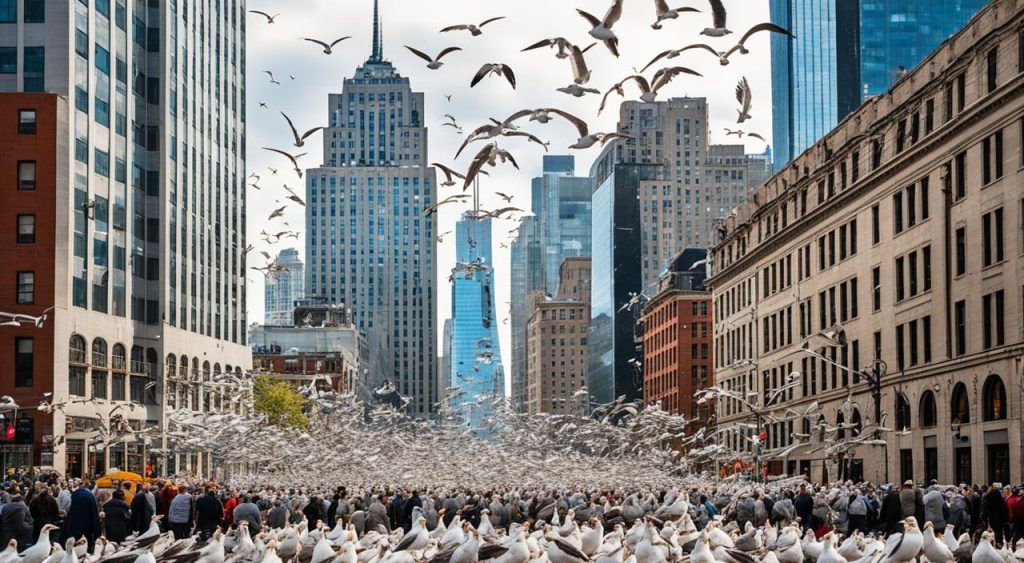
Seagulls’ Dietary Diversity: Omnivorous Opportunists
Seagulls are known for their varied and opportunistic eating habits. They are called “omnivorous opportunists.” These birds eat a wide variety of foods, from fish and crustaceans to insects, small mammals, and even trash. Their ability to adapt helps them survive in different places, using what’s available to them.
Intelligent Foraging Techniques of Seagulls
Seagulls show great intelligence in how they find food. They drop hard-shelled mollusks on rocks to crack them open. They also use bread to catch fish. These strategies show how smart and resourceful seagulls are.
What seagulls eat changes with the species, location, and the season. Coastal seagulls often eat seafood like fish and crustaceans. Inland seagulls eat insects, worms, fruits, and seeds. Having enough food is key for their survival. They need to adapt to find food in different situations.
| Food Sources | Feeding Techniques |
|---|---|
| Fish Crustaceans Mollusks Insects Small mammals Human-discarded garbage | Dropping hard-shelled mollusks onto rocks to break them open Using bread to bait fish Hawking insects on the wing Diving to catch marine prey Foot paddling to bring marine invertebrates to the surface |
Seagulls can change their eating habits to fit their environment and find different foods. By learning about their varied diet and smart ways of finding food, we can understand more about these coastal birds. This helps us see their role in nature and their smartness.
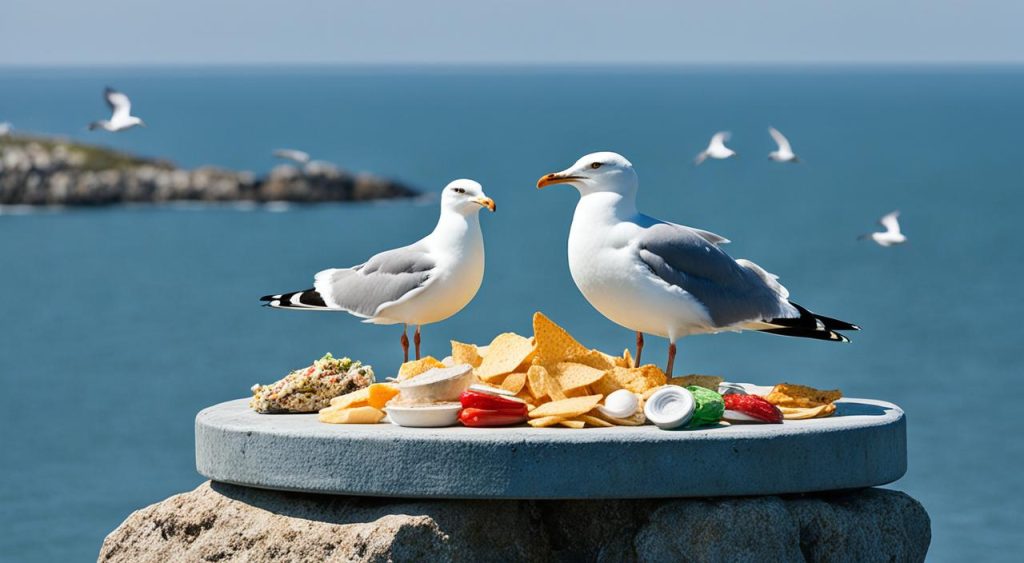
Seagull: Coastal Bird Facts and Fascinating Insights
Seagulls are amazing birds that catch the eye of scientists and the public alike. They are known for their unique calls, beautiful flight, and adaptable nature. This makes them a common sight by the sea and in cities.
One key seagull characteristic is their ability to live in many places. There are over 50 types of seagulls around the world. They can be found from the open sea to city rooftops. This shows how resilient and adaptable they are.
Seagulls also have many interesting traits. They can drink both fresh and saltwater and have complex social lives and ways of communicating. Some species, like the Black-legged Kittiwake, are endangered due to habitat loss and pollution.
“Seagulls are a symbol of freedom, intuition, adaptability, insight, and youthful exuberance. Their presence along the coast and in cities serves as a constant reminder of the beauty and resilience of the natural world.”
Exploring seagull facts helps us appreciate these birds more. They have unique behaviors like “anting” and can live up to 30 years. Seagulls amaze and inspire us with their skills and adaptations.
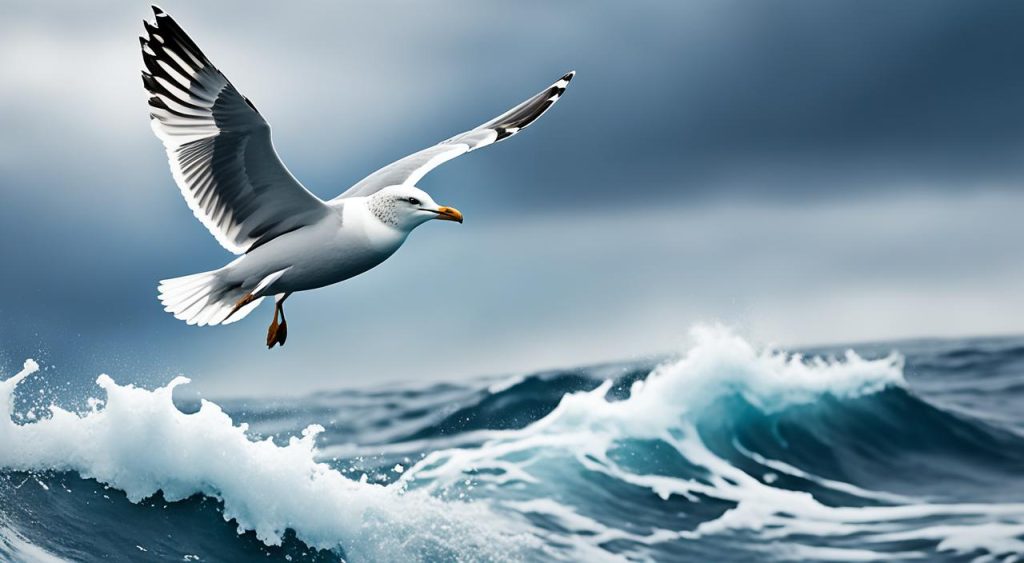
Soaring Skies: The Agile Flight of Seagulls
Seagulls are known for their amazing flying skills. They have strong wings and fly with grace. They use updrafts and the “ground effect” near water to save energy and fly fast. Their aerial agility lets them move easily in coastal winds, making them a beautiful sight.
Monogamous Mates: The Courtship Rituals of Seagulls
Seagulls also have special courtship behaviors. They do aerial tricks, give food to each other, and perform together. They usually stay with one partner for a long time, which is important for their social life and breeding.
Watching seagulls fly and court is interesting. It shows how they adapt and live in different places. From cities to islands, they show how resilient and adaptable they are.
“Seagulls captivate the imagination with their elegant flight and enduring adaptability.”
Seagulls are more than just sea birds. They are a wonder of nature. They show off their seagull flight, aerial agility, soaring behavior, gull courtship, and pair bonding. This has fascinated humans for many years.
Navigating Nature: The Migratory Prowess of Seagulls
Seagulls are known for their amazing ability to migrate over long distances with great accuracy. They use visual cues, celestial navigation, and the Earth’s magnetic fields to navigate during their seasonal moves.
These birds travel hundreds or even thousands of miles between their summer and winter homes. This shows they have a deep understanding of their environment and can find their way easily. Their skill in migratory prowess helps them find food and the right conditions for living and breeding.
By looking at how seagulls navigate, we learn a lot about their amazing skills. They use celestial cues and magnetic fields for long-distance flight. This makes their navigation system fascinating and something researchers are still studying.
“Seagulls are true masters of navigation, seamlessly traversing vast distances between their breeding and wintering grounds. Their ability to read the natural world is a true marvel of evolution.”
Colony Living: The Social Structure of Seagull Communities
Seagulls live in big groups, which keeps them safe and helps them defend against threats. These groups have a complex social setup, with special ways of talking and roles for everyone. They are very protective of their nests and young ones.
Protective Parents: Defending the Nest
Seagull parents will fight hard to protect their nests from danger, like other birds or humans getting too close. This is key for their babies to survive since many eggs and chicks don’t make it. The need to defend the nest is highest right after the eggs hatch, then less as the chicks grow up.
Seagulls have a rich social life, using body language and sounds to talk to each other. Nikolaas Tinbergen’s work in the 1940s showed us how smart European Herring Gulls are at living together. Today, scientists at the Shoals Marine Laboratory are still learning more about seagull communities.
Seagulls have a special way of communicating, like “choking displays” to pick the best nesting spots and loud calls to show who’s boss. By studying their social life and how they care for their young, we learn how seagulls have adapted to live together in big groups.
“Gulls nest in colonies of thousands on coastal breeding grounds, engaging in complex social behaviors communicated through choreographed postures and vocalizations.”
Longevity and Eyesight: The Remarkable Traits of Seagulls
Seagulls are amazing birds known for living a long time and having great eyesight. They can live up to 10-15 years in the wild, with some living over 30 years. This shows how resilient and adaptable they are, helping them live in many different places.
Seagulls are also known for their incredible eyesight. They can spot food from far away, even when flying. This skill helps them find fish and other food under the water, which is key to their survival.
| Trait | Average/Range |
|---|---|
| Lifespan | 10-15 years (some species up to 30 years) |
| Length | 55-67 cm |
| Weight | 800-1270 grams |
| Wingspan | 135-147 cm |
| Flight Speed | 23-30 mph |
Learning about seagulls’ long lives and sharp vision helps us appreciate their survival skills. Their eyesight and long lives make them interesting and tough birds.
“Seagulls possess exceptional vision, superior to human vision, and their eyes can move within their sockets.”
Adapting to Aquatic Life: The Swimming Abilities of Seagull Chicks
Seagull chicks have a special skill that makes them stand out – they can swim from a young age. By the time they are just 10 days old, about 80% of them know how to swim. This skill helps them move through the water and stay safe from predators.
Studies show that swimming for 30 minutes a day helps young seagulls dive better. Those who swim a lot are 25% better at diving by the time they are two weeks old. In colder places, seagull chicks learn to swim faster, showing how adaptable these birds are.
Anting: The Curious Grooming Behavior of Seagulls
Seagulls also have a unique way of grooming called “anting.” They rub ants or other bugs on their feathers. This might help them get rid of parasites or help with shedding old feathers. Looking into seagulls’ habits shows how they’ve adapted to live in their changing environments.
FAQ
Are seagulls strictly “sea birds”?
Seagulls are not just sea birds. They live in many places, not just by the sea. You can find them near lakes, rivers, and even in cities.
How many species of seagulls are there around the world?
There are over 50 types of seagulls worldwide. Each type has its own special traits and ways of living.
How have seagulls adapted to urban environments?
Seagulls have learned to live in cities well. They find food and places to nest in urban areas. They even live on rooftops and buildings.
What are the diverse feeding habits of seagulls?
Seagulls eat almost anything. They like fish, insects, small mammals, and even trash. They are known for eating whatever they can find.
What are some of the remarkable traits and behaviors of seagulls?
Seagulls can drink both fresh and saltwater. They have complex social lives and ways of talking to each other. They also do a thing called “anting” to keep parasites off their feathers.
How do seagulls exhibit their aerial prowess and courtship behaviors?
Seagulls are amazing flyers. They show off in the sky and do special dances to find a mate. They also give food to each other as a way to say hello.
How do seagulls navigate during their long-distance migrations?
Seagulls are great at finding their way over long distances. They use the sky, stars, and even the Earth’s magnetic field to navigate.
How do seagulls exhibit their social dynamics and parental behaviors?
Seagulls live in big groups for safety and to protect their homes. They have a complex social life with their own way of talking and roles. Parents will fight to protect their nests from danger.
What are the exceptional longevity and visual capabilities of seagulls?
Seagulls can live up to 30 years in the wild. They have great eyesight, which helps them find food from far away.
What unique adaptations do seagull chicks exhibit?
Seagull chicks can swim right after they hatch. This helps them find food and avoid predators. They also do “anting” to keep parasites off their feathers.
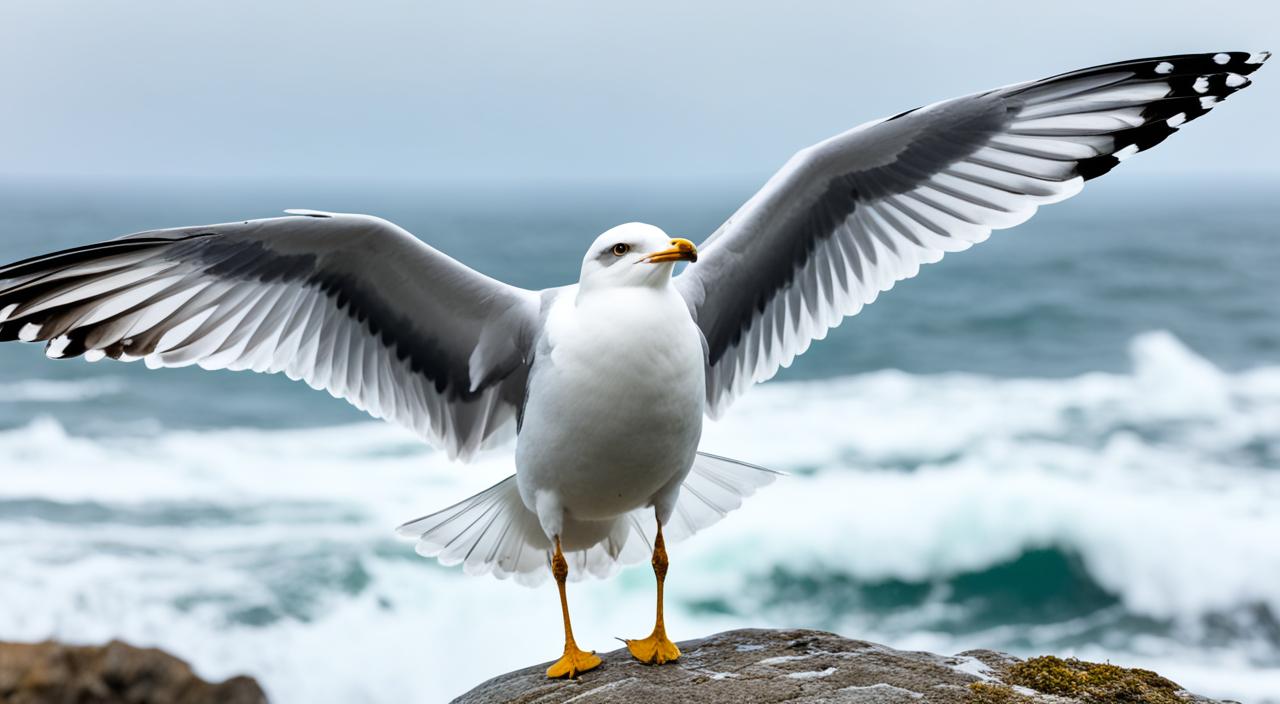


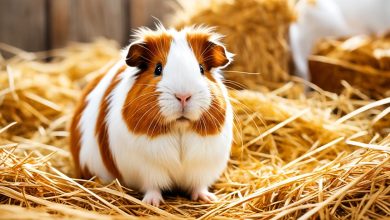
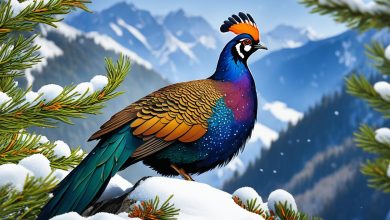
One Comment